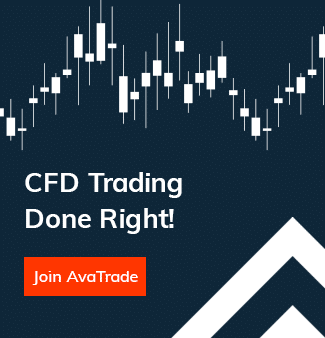
Trading Coffee Contracts For Difference
Coffee is a slow-brewed liquid that is prepared from roasted coffee beans. Starting out as berries picked from a green shrub known as the Coffea plant, which grows in a tropical climate in over 70 countries, an overwhelming majority of imports come from developing countries. The wordwide daily consumption rate of coffee stands at 3.4 billion cups, making the demand for this product extremely high.
Join Friedberg Direct now and enjoy competitive spreads and leverage as well as the benefits of trading with a regulated, Canadian broker!
Advantages for trading Coffee with Friedberg Direct
- Leverage trading on Coffee with CFD trades
- Trade on a 17.5 hours a day market
- 24/5 technical support
- A regulated Canadian broker
- Powerful MT4 & MT5 platforms
Coffee trading market
Originally cultivated in Ethiopia in the late 1400s, the berries were dried and roasted. Then the aromas were liquidated to be served to kings and sultans. With that, the coffee bean started to gain popularity among the Western world.
We are all aware of the metabolic effect coffee has on our bodies, counteracting adenosine, a chemical molecule makeup that creates the feeling of fatigue. Coffee messages your brain to ignore the adenosine and instead releases adrenaline into your bloodstream, allowing your body to feel alert and excited; and this is what makes coffee a necessity to many on a frequent basis.
Coffee exchanges include the Brazilian Mercantile and Futures Exchange (BM&F), NYSE Euronext, Kansai Commodities Exchange (KEX), Intercontinental Exchange (ICE), Multi Commodity Exchange (MCX), Singapore Commodity Exchange (SICOM), National Commodity and Derivatives Exchange (NCDEX) as well as Tokyo Grain Exchange (TGE).
Contract Specifications:
- Coffee trading hours: 09:15 to 18:29 (GMT)
- Minimum trade size: 10
- Contract size: 100 lbs.
- Ticker symbols: COFFEE_C
- Price Quote: cents per lbs.
- Tick size: $0.0005 per pound
What influences coffee prices
High-quality Arabica coffee beans are generally grown in South and Central America and command a high price for their cultivation. This has catapulted Brazil (which produces over 2.7 million metric tons annually) to become the largest coffee exporting country globally.
Lately, Brazil has had to face the competition of cheaper coffee beans such as Robusta. Robusta has developed a strong demand worldwide, and Vietnam is a leading competitor in production of coffee, with over 1.65 million metric tons on an annual basis. Vietnam comes in second in the world of coffee exports as Robusta beans are 70% cheaper than Arabica beans making it more available to the masses.
Weather and climate have everything to do with the production of coffee berries. The production and roasting process attribute to its distinctive taste.
If the weather is not at its optimal, this affects the cultivation and production of the plant, hence, affecting the price of coffee. Should the roasting process be shorter the beans tend to be more acidic and bitter, yet cheaper, while longer roasting result in a smoother taste, and this process can also influence the price.
The demand for coffee is high in countries that consume the most coffee, which are: Finland leading with the largest amount of coffee consumed per person on average at 9.6 kg per capita, Norway with 7.2 kg per capita and the Netherlands at 6.7 kg per capita.
Understanding coffee trading
At Friedberg Direct, every commodity has its own ticker symbol, contract value and margin requirements. To trade this commodity you should be aware of all its components to eventually calculate your potential profits and losses.
Let’s say the trader opened a position equivalent to 37,500 pounds, which is the standard contract size on ICE. Should there be a price move from 135.5 cents to 140.7 cents per pound, to calculate the monetary value of this contract, subtract the entry price from the exit price, multiply by the size of the position, and divide by 100 to get the value in USD: (140.7-135.5)x37500/100=$1950
Start Trading CFDs with Friedberg Direct
Do you know which way the coffee markets will go? Then join us at Friedberg Direct and trade on coffee CFDs. Enjoy the best agricultural commodities CFD trading experience with an industry leader!
Open an account now to enjoy yours, or try our risk-free demo account.
Coffee Trading FAQs
- What influences the price of coffee?
Like all agricultural commodities, coffee prices are heavily influenced by the weather. Excessive rain or drought in coffee-growing areas can drive up the price of the bean dramatically, while perfect weather conditions lead to expectations of a bumper crop and send prices crashing lower. Anyone interested in trading coffee would do well to study not only technical chart analysis but also meteorology so that they can understand when developing weather patterns will and won’t affect the current coffee crop.
- How do I begin trading coffee?
First, get ready for a wild ride. Coffee is the second largest commodity traded by volume, but it is also one of the most volatile. This makes it very interesting for traders since higher volatility also can mean a larger potential for reward (and risk too). While you could go through the time and trouble of opening a futures trading account to get access to coffee trading, it is often far faster and more effective to begin trading coffee through CFDs. Be ready to stay at your computer and monitor the markets all day long because coffee futures volatility requires that traders stay on top of their positions at all times.
- What is the best coffee trading strategy?
Coffee is notoriously volatile due to the huge number of factors that can influence this soft commodity. In order to take advantage of this volatility, traders often adopt a strategy that uses Bollinger Bands to track volatility and to identify breakout moves that tend to lead to new trends. Once the trend has begun, a moving average strategy or an indicator such as the MACD can be useful to identify buy and sell signals. Once the trend ends and the market enters a consolidation period, support and resistance levels become increasingly useful in determining entry and exit points.
These FAQs, comments/analysis do not take into consideration your individual personal circumstances and trading objectives. Therefore, they should not be considered as a personal recommendation or investment advice. They are intended for educational purposes only. Past performance is not indicative of future results. There is no guarantee that the contents or instructions will result in profits or not result in losses.







